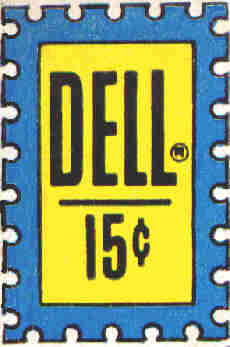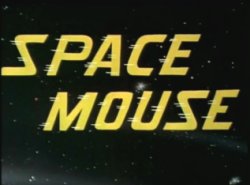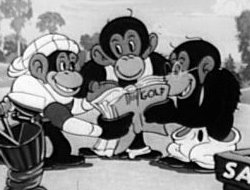
Oswald the Lucky Rabbit is an animated cartoon character created in 1927 by Walt Disney and Ub Iwerks for Universal Pictures. He starred in several animated short films released to theaters from 1927 to 1938. Twenty-seven animated Oswald shorts were produced at the Walt Disney Studio. After Universal took control of Oswald's character in 1928, Disney created a new character similar in appearance to Oswald as a replacement: Mickey Mouse, who went on to become one of the most famous cartoon characters in the world.

Walter Lantz Productions was an American animation studio. It was in operation from 1928 to 1972 and was the principal supplier of animation for Universal Pictures.

Woody Woodpecker is an animated character that appeared in theatrical short films produced by the Walter Lantz Studio and Universal Animation Studio and distributed by Universal Pictures since 1940. Woody's last Woody Woodpecker was produced by Walter Lantz in 1972.
John Frederick Hannah was an American animator, writer and director of animated shorts.

Walter Benjamin Lantz was an American cartoonist, animator, producer and director best known for founding Walter Lantz Productions and creating Woody Woodpecker.

Dell Comics was the comic book publishing arm of Dell Publishing, which got its start in pulp magazines. It published comics from 1929 to 1973. At its peak, it was the most prominent and successful American company in the medium. In 1953 Dell claimed to be the world's largest comics publisher, selling 26 million copies each month.
Burton F. Gillett was a director of animated films. He is noted for his Silly Symphonies work for Disney, particularly the 1932 short film Flowers and Trees and the 1933 short film Three Little Pigs, both of which were awarded the Academy Award for Best Animated Short Film and both of which were selected for inclusion in the National Film Registry.

Barney Bear is an American series of animated cartoon short subjects produced by MGM Cartoons. The title character is an anthropomorphic cartoon character, a sluggish, sleepy bear who often is in pursuit of nothing except for peace and quiet. 26 cartoons were produced between 1939 and 1954.

Chilly Willy is a cartoon character, a diminutive penguin. He was created by director Paul Smith for the Walter Lantz studio in 1953, and developed further by Tex Avery in the two subsequent films following Smith's debut entry. The character soon became the second most popular Lantz/Universal character, behind Woody Woodpecker. Fifty Chilly Willy cartoons were produced between 1953 and 1972.
Andy Panda is a cartoon character who starred in his own series of animated cartoon short subjects produced by Walter Lantz. These "cartunes" were released by Universal Pictures from 1939 to 1947, and United Artists from 1948 to 1949. The title character is an anthropomorphic cartoon character, a cute panda. Andy became the second star of the Walter Lantz cartoons after Oswald the Lucky Rabbit. He achieved considerable popularity until being eventually supplanted by Woody Woodpecker.

The Funnies is the name of two American publications from Dell Publishing, the first of these a seminal 1920s precursor of comic books, and the second a standard 1930s comic book.
Oskar Lebeck was a stage designer and an illustrator, writer and editor who is best known for his role in establishing Dell Comics during the 1930s and 1940s period known as the Golden Age of Comic Books.

Wingate Chase Craig was an American writer-cartoonist who worked principally on comic strips and comic books. From the mid-1940s to mid-1970s he was a prolific editor and scripter for Western Publishing's Dell and Gold Key Comics, including the popular Disney comics line.

The first Space Mouse is a comic book character published from 1953 to around 1956 by Avon Publications. Space Mouse is also the name of a 1959 Universal Studios cartoon featuring two mice and a cat named Hickory, Dickory, and Doc. A second Space Mouse character was published by Dell Comics from 1960 to around 1965. The Dell Comics version was also featured in a 1960 cartoon produced by Walter Lantz, entitled The Secret Weapon.

Homer Pigeon is an animated character created by Walter Lantz, who made his first appearance in the cartoon "Pigeon Patrol" in 1942. His final appearance was in 1964, in The Woody Woodpecker Show episode "Spook-A-Nanny".

Meany, Miny, and Moe are animated characters created by Walter Lantz, who made their first appearance in the Oswald the Lucky Rabbit cartoon Monkey Wretches (1935). Their final animated appearance was in 1937 in The Air Express.

Swing Symphony is an American animated musical short film series produced by Walter Lantz Productions from 1941 to 1945. The shorts were a more contemporary pastiche on Walt Disney's Silly Symphonies, and often featured top boogie-woogie musicians of the era. While the first cartoon include the characters Woody Woodpecker and Andy Panda, it mainly features a variety of different characters created exclusively for the series, with Oswald the Lucky Rabbit making an appearance in one cartoon.

Gilbert H. Turner was an American animator, comic book artist and producer.














